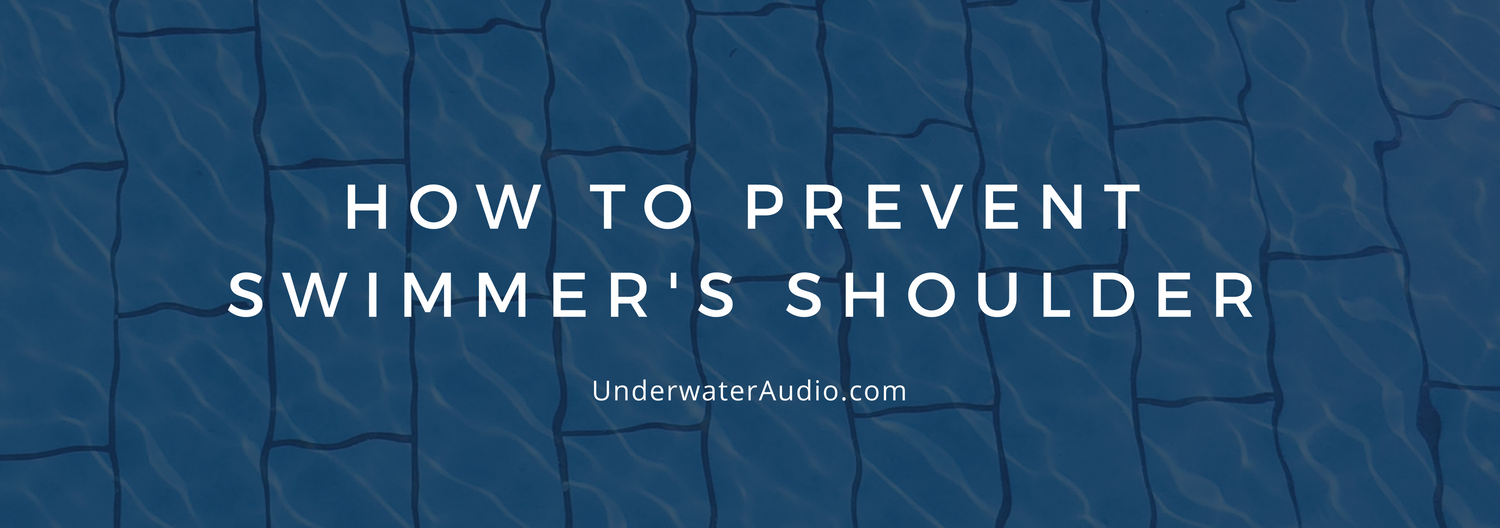If you've spent a lot of time in the pool, you have probably heard of, or experienced, Swimmer's Shoulder.
Swimmer's shoulder is when you experience pain in your shoulder from connective tissue rubbing on the shoulder blade. This can be caused by overuse, repetitive actions, injury, etc.
Not only does swimmer's shoulder hurt, but it prevents you from continuing to train or work out until it heals.
Strong shoulder muscles are essential for swimming, but the shoulder is also a very mobile joint, which means there is a lot of room for injury. In fact, "90% of complaints by swimmers that bring them to the doctor and/or physiotherapist are related to shoulder problems".
While it is very common, it doesn't need to be. Swimmer's shoulder isn't something that is unpreventable.
So, I've made a list of things that will help you avoid the painful experience of swimmer's shoulder.
Change Your Technique
Your shoulder pain may be caused by poor swimming technique.
That's right, not only is good technique essential for swimming fast, it's also important for preventing injuries.
Watching videos about swimming technique is an easy and quick way to learn about the correct way to swim, depending on each stroke style. This is a good way to learn, but it can be hard to notice when you are not doing it correctly.
Ask another swimmer, a coach, or a trainer to watch your form when you swim so you can get feedback on what you are doing correctly and what you can improve.
For example, in freestyle, two important things to watch for are:
Body rotation - Try to swim most of this stroke on your sides rather than your stomach. Roll from side to side.
Hand placement entering the water - Your hand should enter the water flat with the tips first, not thumb first.
If you make sure that you have perfect (or at least correct) technique, you will have a better chance at avoiding injury.
Don't skip learning about and practicing proper technique!
Know When It's Time For a Break
Don't train with overtired muscles. It's understandable to want to keep working hard and improving, but sometimes your body just needs a break. Take the time away from swimming to let your body heal before an injury occurs.
It's better to let your body have a day to rest now, than to have to give it weeks to recover and heal from an injury.
If you are just starting to work out, it's important to ease your way into your workouts.
If you are planning on turning up intensity of your workout, gradually do it. Suddenly increasing intensity is a sure way to aggravate your muscles.
Work On Your Posture
Keeping an eye on your posture is important. If your posture is bad outside the pool, it will probably be bad in the pool. If you have bad posture, your rounded shoulders and flat back will limit overall spinal motion, which means an increased chance of swimmer's shoulder and other injuries.
For proper posture, follow these tips:
- Your head should be lined up with your back.
- Your chin should be parallel to the ground.
- When you stand, stand up tall and straight with your shoulders back. Don't slouch! Your shoulders shouldn't be rounded.
- Keep your feet shoulder width apart.
You can find more information on posture at this link.
Exercises/Stretches
Your neck and back muscles are connected to your shoulder muscles, so performing the following stretches as part of your warm-up will help prevent injury:
1) Axial Extension: Stand or sit straight up (with the correct posture we talked about earlier). Move your chin backward and downward. Then move your head back to your starting position. Repeat.

2) Plank Hand Step Ups: Get something that you can put your weight on, such as a short box or low step. Get in the push-up position with the box/step in front of you. Move your left hand from the floor on to the box, and then your right hand. Then move your left hand back to the floor, and then your right hand. Repeat.
3) Rotator Cuff Stretch: Stand up straight. Bring your arms behind you near your lower back and clasp your hands together. Straighten your arms and pull them up while you pull your shoulders back.

4) Rotator Cuff Stretch: Hold a towel in both hands about shoulder width apart. Extend your arms in front of you. Slowly raise your arms in front of you above, and then just behind, your head until you feel a stretch in your chest.
5) Double Arm External Rotation: Hold a resistance band with both hands in front of you. You arms should not be fully extended out in front of you, instead, your elbows should be near your hips. Keep you upper arms close to your sides, and move your hands apart. They should move from in front of you to your sides. Slowly bring your hands back in front of you. Repeat. Your shoulder blades should tense and then relax as you do this.




Leave a comment
All comments are moderated before being published.
This site is protected by hCaptcha and the hCaptcha Privacy Policy and Terms of Service apply.